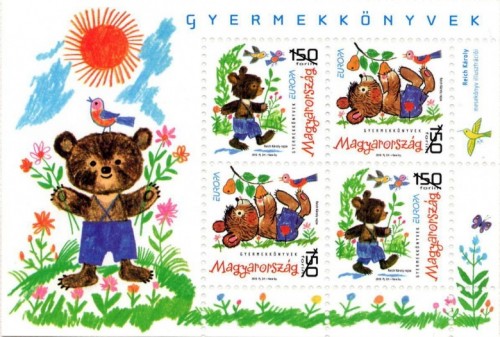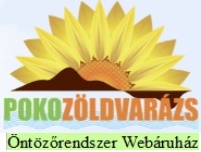
1. MAGYAR - EURÓPA 2010 - GYERMEKKÖNYVEK - Bélyeg rendelési kód: 2010 év bélyegei kompletten
2. ENGLISH - EUROPA 2010 – CHILDREN’S BOOKS - Order code of the stamp: 2010 Year stamps complete
3. GERMAN - EUROPA 2010 – KINDERBÜCHER - Die Bestellnummer Der Marke: 2010 Jahr Briefmarken komplett
Michel:
1. MAGYAR - EURÓPA 2010 - GYERMEKKÖNYVEK
A PostEurop tagországok minden évben szavazás útján választanak ki egy témakört, melyet valamennyien az adott évben kiadásra kerülő ún. EUROPA bélyegen jelenítenek meg. 2010-ben a téma a „Gyermekkönyvek” lett. A Magyar Posta ebből az alkalomból bélyegújdonságán Reich Károly néhány gyermekkönyv illusztrációját mutatja be.
Reich Károly (Balatonszemes, 1922. augusztus 8. – Budapest, 1988. január 7.) Kossuth-díjas magyar grafikusművész. Főiskolai tanulmányait a budapesti Iparművészeti-, majd a Képzőművészeti Főiskolán olyan kiváló mesterek mellett folytatta, mint Haranghy Jenő, Hincz Gyula és Konecsni György. Grafikusi pályafutását plakáttervezőként kezdte, és illusztrátorként folytatta. Művei megtalálhatók a debreceni Déri Múzeumban, a Magyar Nemzeti Galériában és a Petőfi Irodalmi Múzeumban.
A fiatalok számára készített pannói a gyermekek számára fenntartott intézményeket díszítik, pl.: Fóti Gyermekváros, II. sz. budapesti Gyermekklinika, Miskolci Gyermekkórház. Szerteágazó munkásságából különösen könyvillusztrációi emlékezetesek. Mintegy félezer könyv, köztük gyermekkönyv oldalai őrzik alkotásait. Az 1980-as években bronzkisplasztikákat is készített. Számos kitüntetéssel és díjjal jutalmazták munkásságát: Munkácsy Mihály-díj (1954: III. fokozat, 1956: II. fokozat), Kossuth-díj (1963), Érdemes művész (1972), Kiváló művész (1975) és SZOT-díj (1979). (Forrás: hu.wikipedia.org)
Az alkalmi bélyegkisív, a hozzátartozó borítékrajz és bélyegző grafikája Reich Károly, Kormos István örökzöld Vackor történetei ihlette munkái alapján készült.
Forrás: Magyar Posta
2. ENGLISH - EUROPA 2010 – CHILDREN’S BOOKS
Every year the member countries of PostEurop vote to choose the subject to appear on all their EUROPA stamps to be released that year. In 2010 the topic chosen was children’s books. Magyar Posta presents a selection of illustrations for children’s books by Károly Reich in its new stamps for this occasion.
Károly Reich (Balatonszemes, 8 August 1922 - Budapest, 7 January 1988) was a Hungarian graphic artist and Kossuth Prize winner. At the Academy of Applied Arts and then the Academy of Fine Arts in Budapest he studied under such distinguished masters as Jenő Haranghy, Gyula Hincz and György Konecsni. He began his artistic career designing posters and then became an illustrator. His works are to be found in the Déri Museum in Debrecen, the Hungarian National Gallery and the Petőfi Literary Museum.
His panel paintings for young people are hung in institutions for children such as Children’s City in Fót, the Budapest Children’s Clinic No. 2, and the Miskolc Children’s Hospital. Of his wide ranging oeuvre, his book illustrations are particularly memorable. His works adorn the pages of about five hundred volumes, including children’s books. In the 1980s he also made bronze sculptures. He received numerous honours and awards for his work: Mihály Munkácsy Prize (1954: 3rd class, 1956: 2nd class), Kossuth Prize (1963), Artist of Merit (1972), Outstanding Artist (1975) and the award of the National Council of Trade Unions (1979). (Source: hu.wikipedia.org)
The design of the miniature sheet, the first day cover and postmark are based on Károly Reich’s illustrations inspired by István Kormos’s evergreen adventures of the little bear Vackor.
3. GERMAN - EUROPA 2010 – KINDERBÜCHER
Die Mitgliedsstaaten von PostEurop wählen jedes Jahr durch Abstimmung einen Themenbereich aus, den sie auf der Ausgabe der sog. EUROPA-Briefmarke in dem gegebenen Jahr allesamt darstellen werden. 2010 ist das Thema der Marke "Kinderbücher". Die Magyar Posta präsentiert aus diesem Anlass einige von Károly Reichs Kinderbuchillustrationen.
Károly Reich (Balatonszemes, 8. August 1922 – Budapest, 7. Januar 1988) Kossuthpreisträger, ungarischer Grafiker. Er studierte an der Budapester Hochschule für Kunstgewerbe sowie an der Hochschule für Bildende Künste, bei solch ausgezeichneten Meistern wie Jenő Haranghy, Gyula Hincz und György Konecsni. Seine Laufbahn als Grafiker begann er als Plakatentwerfer und setzte sie als Illustrator fort. Seine Werke sind im Déri-Museum Debrecen, in der Ungarischen Nationalgalerie und im Literaturmuseum Petőfi zu sehen.
Seine für Kinder angefertigten Panneaux zieren Kinderinstitutionen, z. B. Kinderstadt Fót, Kinderklinik II Budapest, Kinderkrankenhaus Miskolc. Erinnerlich von seinem weit verzweigten Gesamtwerk sind besonders seine Buchillustrationen. Blätter von etwa fünfhundert Büchern, darunter Kinderbücher bewahren seine Werke. In den 1980er Jahren fertigte er auch Bronze-Kleinplastiken. Seine Tätigkeit ist mit zahlreichen Auszeichnungen und Preisen belohnt worden: Mihály Munkácsy-Preis (1954: 3. Stufe, 1956: 2. Stufe), Kossuthpreis (1963), Verdienter Künstler (1972), Ausgezeichneter Künstler (1975) und SZOT-Preis (1979). (Quelle: hu.wikipedia.org)
Der Sonderkleinbogen, die Zeichnung des dazugehörigen Umschlags und die Grafik des Stempels wurden auf Grund der Arbeiten von Károly Reich angefertigt, inspiriert von István Kormos immergrünen Geschichten des Teddybären „Vackor“.










